I was a voracious reader as a kid. After church, on Sunday afternoons, I would go to my dad’s study. I would scan the shelves for books about church history, missionary stories, or creationism. Then I would curl up under some blankets and read the afternoon away. One Sunday, a large blue book with a golden title caught my eye. Unlocking the Mysteries of Creation soon became a favorite of mine, because of its colorful pictures and shocking claims. The portion on anthropology was especially interesting, with its pictures of ancient human footprints found in dinosaur layers, and stories of lost technologies.
The views expressed in this article reflect those of the author mentioned, and not necessarily those of New Creation.
The book also attempted to debunk the supposed evolutionary intermediates between man and the apes. I learned that the famous apeman, Lucy, did not actually walk upright. Her knee, which allegedly proved that she walked upright, had actually been found miles away from the rest of her skeleton.1 Generally, the book instilled a mistrust for scientists in me. Clearly, these alleged experts were lying about the evidence for human evolution.
Now, I am studying biology in college. I’ve been researching the human fossil record for years. Along the way, I have come to the opinion that some common creationist claims about this field are incorrect. So, in this article I will attempt to retell the true story of Lucy’s knee. We will follow the story chronologically, from the discovery of the first Hadar knee joint to the present. Along the way, we’ll learn about anatomy, meet some intriguing characters, and hopefully come to understand the origin of this conspiracy theory.
The A.L. 129-1 Knee – 1973

In 1973, Donald Johanson was still a grad student. The young man had earned his masters degree three years prior. Now, Johanson had the unique opportunity to do field work in Hadar, Ethiopia. One day, while looking for fossils, Johanson spotted a bone jutting out of the sandy soil. He walked over to the bone and lightly kicked it, thinking it was a hippo rib. This action unearthed the rest of the bone, exposing its true identity. It was actually a small primate tibia, or shinbone. Another bone several yards away caught his eye. This was a femur, or thigh bone, split into multiple pieces. Johanson realized that he had found both halves of a knee joint.2
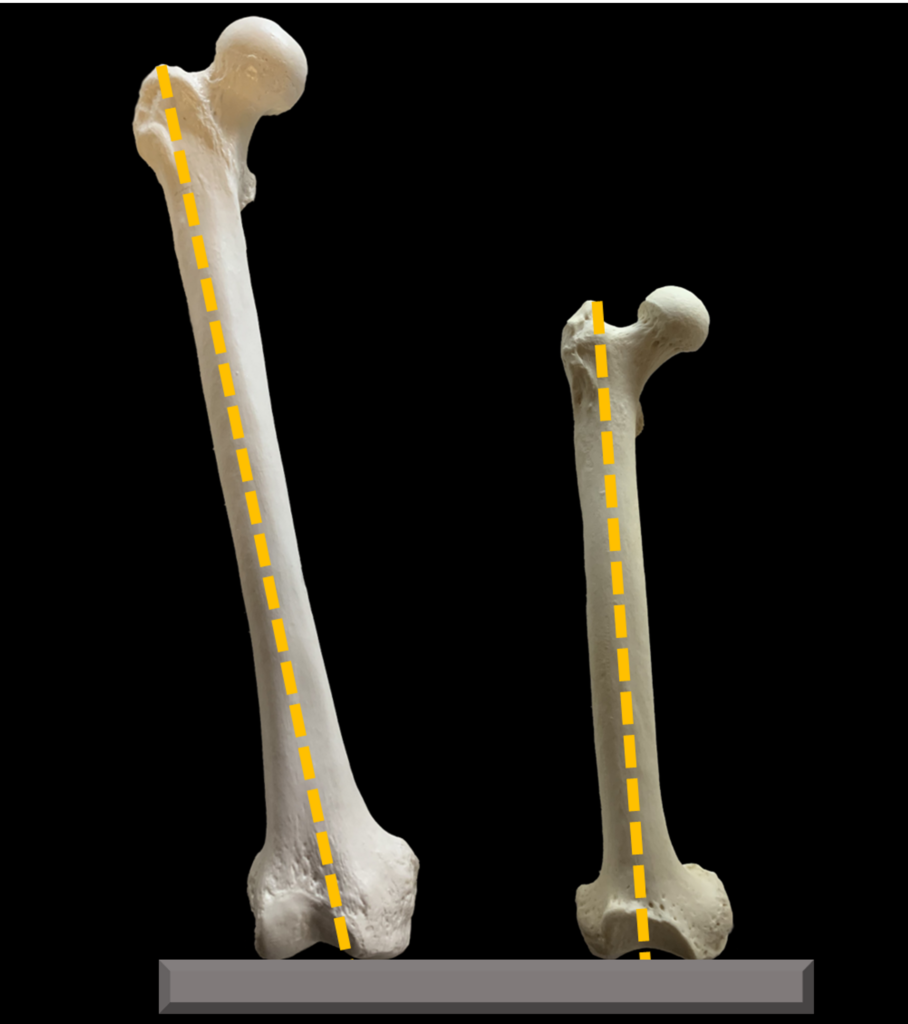
It was when Johanson fit the bones together that he understood the true significance of his find. When placed atop the tibia, the femur formed a distinctive slant. Johanson knew that this was an unusual arrangement for a primate. Chimpanzees, for example, have vertically oriented femora. This works fine when they walk on all fours. Their legs stick straight down on either side of their body. However, when a chimpanzee stands upright to walk on its hind legs, it is unstable. Since their femur is straight, they distribute weight to the sides of their body. They take clumsy steps, swaying from side to side.
Human femora slant by about ten degrees when placed on a flat surface. This angling directs the weight of our upper body down, towards our midline. As a result, we are able to walk upright in an elegant and efficient manner. The presence of this feature in Johanson’s fossil suggested that it had been a biped.
The Strange Anatomy of A.L. 129-1
The knee exhibited a strange mixture of human and ape characteristics. The A.L. 129-1 knee was surprisingly small. It is dwarfed when put next to the corresponding bones of a typical modern human. Like humans, the distal condyles of the A.L. 129-1 femur are elliptical in shape. The condyles are rounded knobs of bone on which the lower leg hinges. When viewed from the side, our condyles look oval-shaped. This allows our knee to “lock” in place, stiffening the joint. Chimpanzees are unable to “lock” their knees. When chimpanzees walk upright, they keep their knees bent.
Unlike humans, the A.L. 129-1 femur does not have clear muscle markings. Human femora have a long pointed ridge, called the linea aspera, which runs the length of the femoral shaft. Near the bottom of the shaft the linea aspera forks into two lines: the medial and lateral supracondylar ridges. The muscles which attach to these ridges play a role in the flexion of the knee. Neither of these ridges are pronounced in the A.L. 129-1 femur.
By the time that the field season ended that year, it was still unclear who the knee had belonged to. The fossil was given the catalog number “A.L. 129-1”, indicating that it was the first find at Afar Locality 129.
The A.L. 288-1 Skeleton – 1974
The year 1974 brought a new field season. The scientists were eager to find more remains of the mysterious biped. One morning, Johanson and another member of the team drove out of camp to a fossil site called Locality 162. Over the course of the morning they slowly walked through the desert, scanning the surface for bones. Around noon, they began to head back to their Land-Rover. As Johanson climbed out of a small gully, something caught his eye. He knelt down for a closer look, and saw that it was a fossil forearm bone. A moment later, he realized that bone fragments littered the slope around him.3
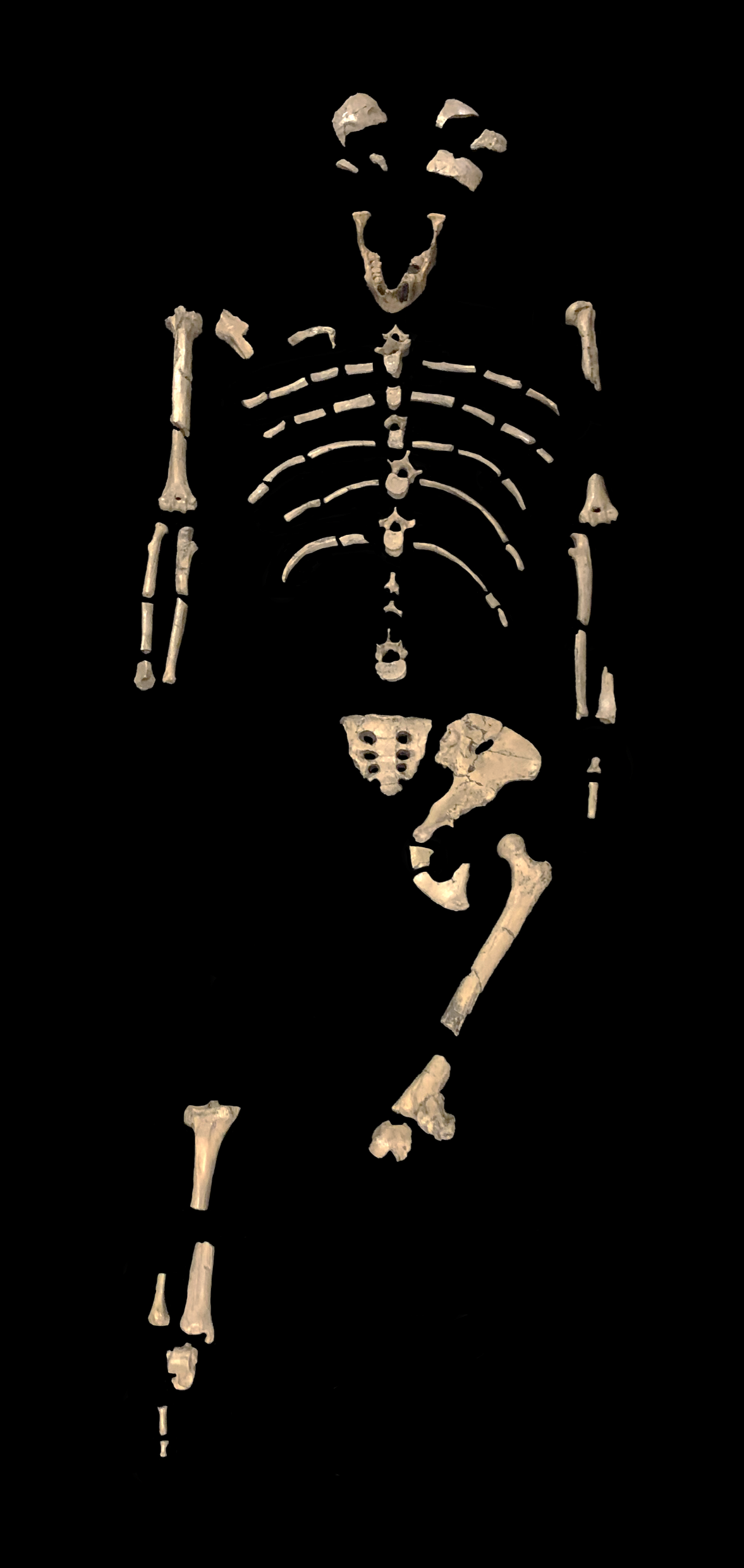
Over the next three weeks, the team collected the bones and sorted through the gravel of the site. In that time, they found a remarkably complete fossil skeleton which they nicknamed “Lucy”. The skeleton consists of fragments of the skull, a nearly complete jaw bone, lots of ribs and vertebrae, arm bones, pelvic bones, leg bones, and even some pieces of the hand and foot. Importantly for our discussion, Lucy’s left femur and right tibia were both recovered. Her femur is essentially complete, except for a small gap near the bottom of the shaft. Unfortunately, the condyles which form the knee joint, were partially crushed and broken. However, Lucy appears to have had a bicondylar angle. The upper portion of the tibia which forms the lower part of the knee joint as well as the lower portion which forms the ankle joint were preserved.
Lucy was Bipedal
CT scans of Lucy’s femur have revealed structural adaptations to bipedalism. The unique stresses associated with upright walking modify bones in consistent ways. Bones are living tissues that grow and adapt over time. As we begin to age and walk upright, we place the weight of our upper body on the head of our femur. So, the bone on the bottom of the femoral neck thickens to account for this load and properly direct it through the shaft. In contrast, chimpanzees have a nearly uniform distribution of cortical bone around their femoral neck. Lucy’s femoral neck was clearly thicker on the bottom, indicating that she was distributing her weight similarly to humans.4
A New Australopithecus species
Down in Southern Africa, scientists had been finding bones of bipedal apes for decades. They classified these fossils within the genus Australopithecus. Johanson realized that the fossils he was finding looked similar to those South African apes. However, he argued that his fossils were more “primitive” and older. Johanson went on to assign the Hadar fossils to the species Australopithecus afarensis. This made Lucy the most complete Australopithecus skeleton ever found. It would take another twenty years to find a competitor for that title. Since Lucy’s skeleton sampled nearly every part of the australopithecine body, it could serve as a comparative baseline. The team could compare isolated fossils to Lucy to judge whether or not they belonged to the same species. They found that Lucy’s femur and tibia were nearly identical to those of the A.L. 129-1 knee.
The A.L. 333-w56 Femur – 1975
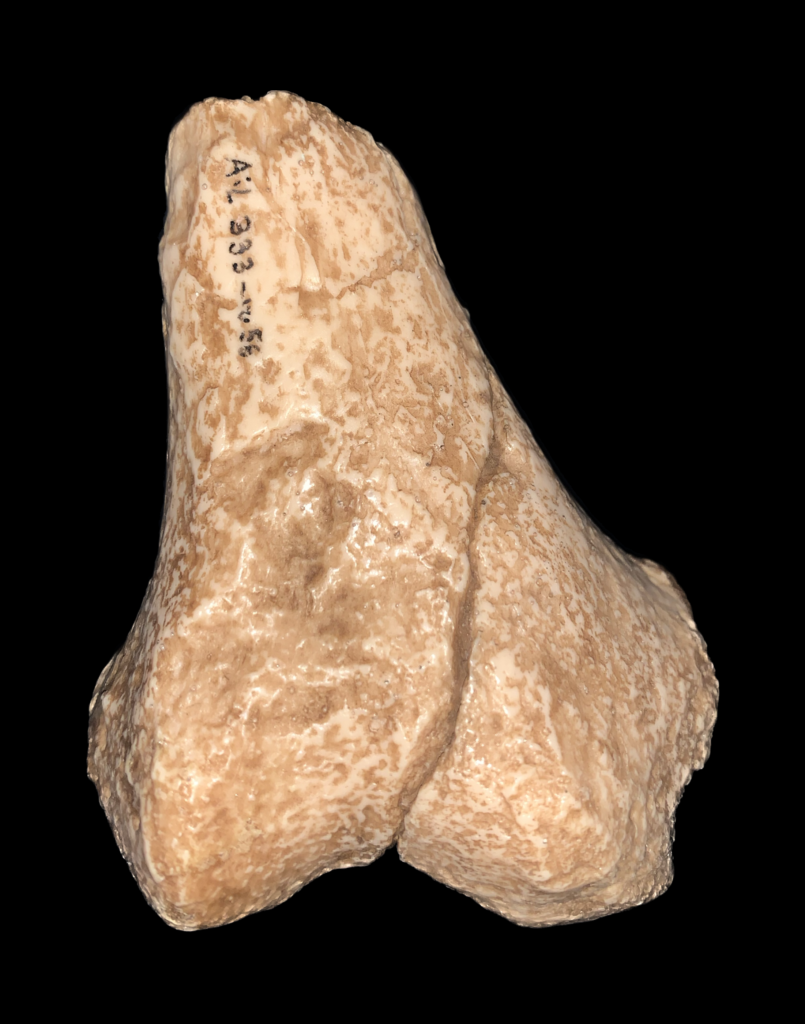
A third Hadar field season began in 1975. This year, the team discovered a major new fossil locality called A.L. 333. Mike Bush, a quiet young doctor, made the find one morning. At the bottom of a steep slope, he found two hominin teeth encased in a piece of rock. The next day, the team returned to the site and began exploring up the slope. They found bones and teeth from thirteen different individuals.2 Most importantly for our story, they found a distal femur, called A.L. 333-w56.
Anatomically, this new femur was quite similar to the A.L. 129-1 and A.L. 288-1 femora. However, A.L. 333-w56 was much larger than either of the previous finds. Ultimately, Johanson interpreted the size differences between the remains as sexual dimorphism. In many ape species, males tend to be significantly larger than females. Lucy was probably a small female, while A.l. 333-w56 may have been a large male.
The Search For Early Man – 1985
Ten years later, National Geographic released a special issue entitled: “The Search For Early Man.”5 Johanson’s research was one of the highlights of the article. A large centerfold portrayed a reconstruction of Lucy’s skeleton in various stances. However, the importance of this magazine article lies in a small picture on page 593. The photograph shows three femora side by side. On the left is a chimpanzee femur and on the right is a modern human femur. In between the two sits a large femur labeled: “Lucy.”
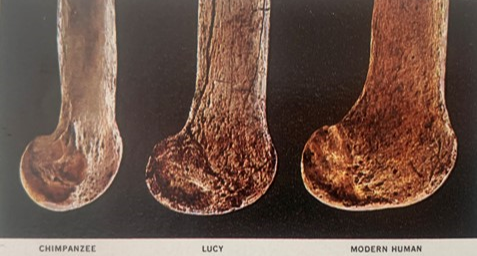
The femur labeled “Lucy” is not actually from the A.L. 288-1 skeleton. The size and shape of the bone betray it to be the A.L. 333-w56 femur. It appears that National Geographic used the name “Lucy” in a colloquial sense. They used the name to refer to the whole species Australopithecus afarensis, not just the A.L. 288-1 skeleton. Use of Lucy’s name in this way is not uncommon, even among creationists. Both professional scientists and lay people commonly view Lucy as broadly representative of her species.
However, several of National Geographic’s readers had a much less charitable interpretation of the photograph. Tom Willis and Roy Holt were both members of the Creation Science Association for Mid-America. They were, apparently, in communication with M. Bowden, a British creation scientist. Bowden had come to realize that the femur pictured in the National Geographic article did not actually belong to the A.L. 288-1 skeleton. However, he did not seem to recognize the colloquial use of the name “Lucy”. Bowden appears to have thought that National Geographic was literally assigning this knee to the A.L. 288-1 skeleton. He communicated this concern to Willis and Holt, who then took action.
Johanson’s Speech – 1986
In November of 1986, Johanson traveled to the University of Missouri. He was scheduled to speak about his research on the Hadar fossils. News of Johanson’s lecture happened to reach Willis and Holt, who showed up specifically for the event. Holt was planning to confront Johanson over the femur which had appeared in the National Geographic article.
During his lecture, Johanson argued that Australopithecus afarensis had been bipedal. He pointed out that their femur had a bicondylar angle similar to humans. To demonstrate this point, Johanson displayed a picture comparing the A.L. 333-w56 femur to that of a chimpanzee and a modern human. However, his presentation did not contain the labels used in National Geographic. Willis later confirmed that throughout the entire talk, Johanson never explicitly claimed that the knee in the photograph belonged to Lucy.
Johanson concluded his talk, then opened for questions. Holt was, apparently, one of the few to raise his hand. He asked Johanson: “How far away from Lucy did you find the knee?”
Johanson paused to think for a moment, and then replied that the knee had been found “60 to 70 meters lower in the strata and two to three kilometers away” from Lucy.
Holt was shocked. How could Johanson claim that bones found so far apart belonged to the same individual? He retorted: “Then why are you so sure it belonged to Lucy?”
This question may have surprised Johanson. After all, he had never claimed that A.L. 333-w56 was part of Lucy’s skeleton. So, he assumed that Holt must now be using the name “Lucy” in a colloquial sense; referring to the whole species Australopithecus afarensis. In his answer, Johanson pointed out that the A.L. 333-w56 femur was nearly identical to the other known Australopithecus afarensis femora. He therefore used this “anatomical similarity” as evidence that the femora belonged to the same species.
Willis and Holt left the talk with the impression that they had uncovered a startling new piece of evidence. The knee which was being used as proof that Lucy walked upright did not actually belong to her! Consequently, they believed that Johanson had publicly admitted that his dealings were fraudulent.
Lucy Goes to College – 1987
Eager for more information, Holt obtained Johanson’s book: “Lucy – The Beginnings of Humankind”. Johanson clearly distinguished between the various Hadar femora in his book. He told the story of Lucy’s discovery in the prologue, detailed the finding of the A.L. 129-1 knee in chapter seven, and mentioned the A.L. 333-w56 femur in chapter ten. Unfortunately, the book only further compounded Holt’s confusion. He mistakenly concluded that the National Geographic picture was a photograph of A.L. 129-1, when it was actually A.L. 333-w56.
Willis, meanwhile, went on to write an article about their encounter with Johanson. The essay, entitled “Lucy Goes to College”, was later published in the Creation Science Association newsletter.6 In the article, Willis argued that Johanson was deliberately misleading the public by making it appear as if the Hadar knee belonged to Lucy. He said that:
“Only under precise questioning did he admit that the knee was found over a mile from Lucy. To the best of our knowledge this admission has not appeared in print!”

In reality, this information had appeared in print as early as 1978.7 In his original paper describing the species Australopithecus afarensis, Johanson clearly provided the provenance of the different femoral remains. It mentioned the A.L. 129-1 knee under the list of fossils recovered from the Sidi Hakoma Member. It then recorded the A.l. 333-w56 femur as coming from the Denan Dora Member. Finally, the A.L. 288-1 skeleton is recorded to come from the Kada Hadar Member. So, this early paper makes it clear that the fossils came from different sites of differing ages.
Willis then went on to complain about Johanson’s presentation of the evidence, and insult him:
“What transpired here then is that Johanson gave a clear demonstration of our assertion that evolution has nothing whatsoever to do with science… Johanson not only (deceptively) used bones scattered over a mile apart, he presented an argument he should know to be false.”
“Evolution, you see, is not Johanson’s science. It is his religion… and his profession… His twisted presentation of the data indicates that greed (for prestige, as well as money) has apparently also made a prostitute of him.”
Frair’s Question
Willis’s article documenting his encounter with Donald Johanson quickly spread through the creationist community. Most significantly for our story, it reached Dr. Wayne Frair, a professor of biology at King’s College in New York. Frair attended another of Johanson’s public lectures to verify the information. He reportedly asked Johanson: “Over how large an area did you find Lucy’s bones?”
Johanson responded by saying that they found Lucy’s bones: “Over an area no larger than this room.”
This response understandably confused Frair. Johanson had just directly told him that Lucy’s bones had been found in an area the size of a small room. However, Willis was claiming that Johanson was attributing a knee found miles away to the Lucy skeleton. If this were in fact the case, why would Johanson have said that Lucy’s bones were found in the area of a small room? Frair wrote a letter explaining this conundrum to Willis and Holt.
In response, Willis and Holt informed Frair that he had asked “the wrong question”. They told Frair that he should write to Johanson asking specifically about the distance between the Hadar knee and Lucy’s skeleton. Frair did so, and soon received a response. In his letter, Johanson told Frair that the Hadar knee had been found: “Roughly 2.5 km from the Lucy site…”
Johanson’s correspondence makes it clear that he did not consider the Hadar Knee to be part of the A.L. 288-1 skeleton. If Johanson had thought that the two belonged to the same individual, then he would have said that Lucy’s bones were spread over 2.5 kilometers. However, when asked about the distribution of Lucy’s bones, he correctly reported that Lucy’s skeleton had been discovered over the area of a small room.
Willis’ Realization
It wasn’t until later that Willis came to realize that Johanson had honestly answered Frair’s original question. Frair had asked Johanson over how large an area Lucy’s bones were found. He was assuming that Johanson would include the Hadar knee among Lucy’s bones. However, Johanson had interpreted this as a reference to just the A.L. 288-1 skeleton. Willis wrote that: “Johanson told them the truth, but mightily confused them because they thought he was talking about Lucy AND “the knee”…”
Despite this admission, Willis continued to maintain that Johanson was being deceptive. He claimed that the whole case for Lucy’s bipedality rested on a bone which was found miles away from her skeleton. This is obviously incorrect, as habitual bipedality can be reasonably inferred from the bones belonging to the A.L. 288-1 skeleton alone. In a collection of notes on his original article, Willis wrote that:
“Lucy is today’s Piltdown, Java, Nebraska man. The presentation of this “evidence for human evolution” is as much a fraud as these earlier frauds.”8
The Broader Creationist Reception
Many well meaning creationists rapidly adopted these new talking points. The distance between Lucy and “her knee” became the new silver bullet against evolution. It proved not only that evolutionists were wrong, but also that they were liars. Caught up in this conspiracy, however, they failed to realize that Willis had walked back his original argument. Willis now understood that evolutionists viewed Lucy and the Hadar Knee as separate individuals. No one was claiming that the Hadar Knee was part of Lucy’s skeleton. In any case, creationists as a whole did not notice this change in argumentation. As a result, they continued to use Willis’s original argument long after he had abandoned it.
Unfortunately, the claim that Lucy’s knee was found miles away from the rest of her skeleton is still commonly repeated by creationists today. This argument often appears in articles, YouTube videos, and FaceBook groups, occasionally even from prominent creationist organizations.9
Conclusion
The true story of Lucy’s knee has some important lessons for us as creationists:
First, we need to be careful not to fall into the trap of conspiratorial thinking. Many creationists have a tendency to believe in conspiratorial claims. This inclination is quite understandable given our worldview. We believe that God created the earth and its creatures in the recent past, an idea which is directly opposed to the consensus of modern science. We mistrust conventional scientists, because we think that they must necessarily be wrong on so many topics. Disagreeing with scientific consensus is not necessarily bad or even conspiratorial. It all comes down to the way in which we disagree. We must not rely on old, poorly supported argument or accusations of fraud and secret agendas.
Second, creationists have historically used incorrect claims about Lucy’s knee joint to dismiss human evolution. Lucy’s knee was not found miles away from the rest of her skeleton. Creationists actually confused Lucy’s leg bones with those of other hominins found at Hadar. As a result, it is important that we discard these false claims in favor of new models which can accommodate the evidence of bipedality in Lucy’s species. Lucy and the other Australopithecines were bipedal apes. However, they are not evolutionary ancestors or relatives of humans. Rather, the various Australopithecus species probably belong to their own created kind.
Footnotes
- Petersen, D. 2002. Unlocking the Mysteries of Creation. Creation Resource Publications, El Dorado, California. Pp. 129. ↩︎
- Johanson, D., Maitland, E. 1981. Lucy: The Beginnings of Humankind. Simon & Schuster Paperbacks. ↩︎
- Johanson, 1981. (Footnote 2) ↩︎
- Ruff, C., et al. 2016. Limb Bone Structural Proportions and Locomotor Behavior in A.L. 288-1 (“Lucy”). PLoS One, 11(11):e0166095. ↩︎
- Weaver, K. Stones, Bones, and Early Man: The Search for Our Ancestors. National Geographic, November 1985, pp. 593. ↩︎
- Willis, T. 1987. Lucy Goes to College. Bible-Science Newsletter, October, pp. 1-3. ↩︎
- Johanson, D., White, T., Coppens, Y. 1978. A New Species of the Genus Australopithecus (Primates: Hominidae) From the Pliocene of Eastern Africa. Kirtlandia, No. 28, pp. 1-14. ↩︎
- Willis, T. 1987. Lucy Remains at College. CSA News. ↩︎
- Adam or Apes. 2022. Dallas Texas, 75229, USA. ↩︎

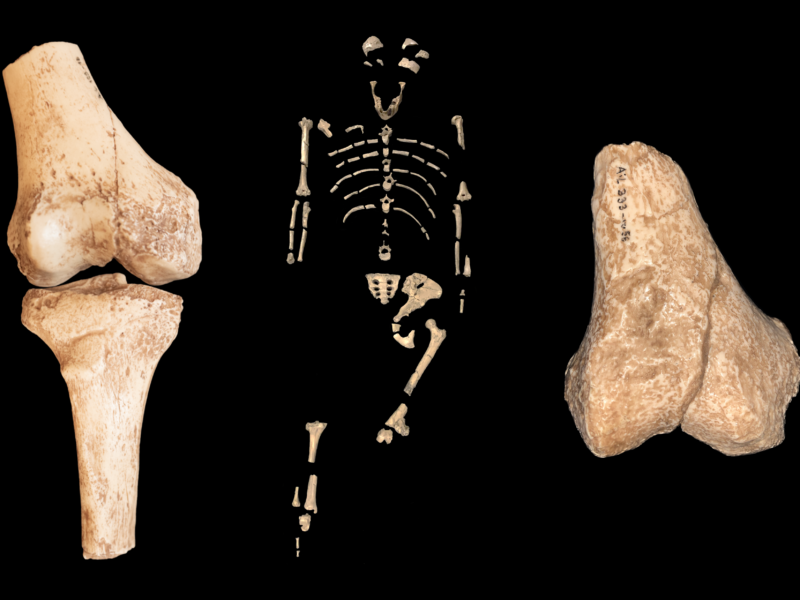
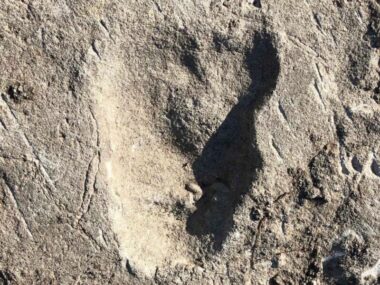
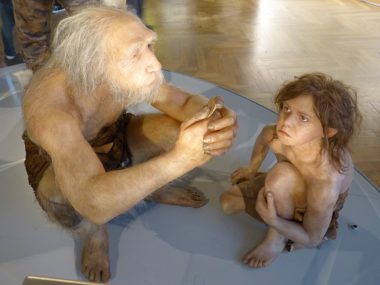


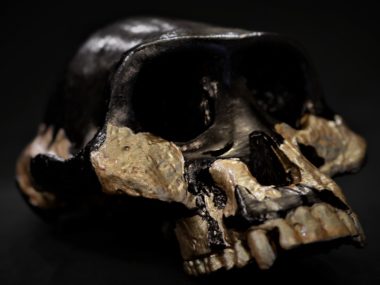





I understand his thinking. But unfortunately this isn’t what is being portrayed at museum entrances if seen the little monkey poster many times under the heading. (Lucy) I’m not sure how you can find bones that far apart then assume they are the same species. Also it’s odd the same guy finds the bones sticking out of the ground.
Hello, I agree with you that the portrayal of Lucy as a human ancestor is inaccurate. Scientists designate bones to particular species based on their anatomical characteristics. When you compare Lucy’s knee to A.L. 129-1 and A.L. 333-w56 you will find that they are all very similar. There are no major anatomical differences between them except size. And, it is likely that the size differences are just due to their being fossils of both males and females. Overall, this suggests that they all belong to the same species. Thank you for your interest!
So you have downplayed the OBVIOUS BIAS and DECEPTION of the evolutionists here… and used used their DECEPTION and PURPOSEFUL LACK OF CLARIFICATION which was easily and readily available to give to the public?
You act as though these LIARS who PRETEND bones belong together… and NEVER INSINUATE otherwise while KNOWING they are being grouped together AGAINST THE SCIENTIFIC EVIDENCE…are justified by their LACK OF HONESTY? And you then conversely BLAME the creationists for having been PURPOSELY DECEIVED by the INTENTIONAL MISPLACEMENT of the bones with the skeleton?
How blatantly BIASED of you! The problem remains if the DISHONESTY of evolutionists! You reported their DECEPTION as simply holding their silence as others foolishly assumed…. but you castigated the creationists for having been bold enough to expose the sham?
Have you even bothered to look at the LARGEST EVOLUTIONARY STUDY EVER which found ZERO EVIDENCE for evolution? This carefully controlled study had TRILLIONS of offspring! And in those offspring… NOT ONE NOVEL PROTEIN DEVELOPED! Yet in the mere BILLIONS of POTENTIAL offspring of Man and chimps… you would assume that THOUSANDS of IMPOSSIBLE NOVEL PROTEINS emerged…ACCIDENTALLY??? The human genome project alongside the chimpanzee genome project NOW PROVES we aren’t 99% or 98% or 95% or 90% or even 80% “similar” to any chimp-like creatures! The evolutionists LIED..YET AGAIN! The THOUSANDS of impossible novel proteins PROVE we are unrelated. The WORST PART is the FANTASY chromosomal Translocation event that silly evolutionists BELIEVE “happened”! They PRETEND like children that 2 Chromosomes AUTOMAGICALLY combined to form new species! The scientific method has PRIVEN that no such FANTASY Translocation can occur. The genetic aberrations that we do know occur…produce disease and sterility…not success and new species. The FAITH of evolutionists is ASTOUNDINGLY childlike. Why on earth would anyone still BELIEVE in evolution with the studies using UNASSUMED OBSERVATIONAL SCIENTIFIC EVIDENCE?
Hello Thomas,
I hope you are doing well. Thanks for reading the article and giving us your feedback. If you don’t mind, I’d like to know how exactly I downplayed the “obvious bias and deception of the evolutionists…” As I point out in the article, the only evolutionary party which could be considered remotely responsible for this controversy is National Geographic. However, they simply used the name “Lucy” as a colloquial term for her species, Australopithecus afarensis. This is a very common way of talking about the species, and is often used even by creationists. Take for example, an article by Mike Oard in 2001 in which he uses the phrase: “Lucy or Australopithecus afarensis…” Is this creationist also guilty of “obvious bias and deception” for conflating the two? Or is this just a natural figure of speech which is appropriate for Oard to use even though it is not technically correct?
Thanks Peter for the interesting discussion. I have found that it is a problem on both sides of this evolution/ creation topic that people want to demonise and distort the views of the other side rather than respecting that people on both sides are sincere in their search for the truth.
It’s a good article Peter.
This publication will help us and other creationists not to use faulty arguments or believe in conspiracy theories.
And it’s true. Many still use those knee-jerk arguments.
It will also help to maintain integrity, and not fall into fallacies such as ad hominems.
It is also very good because it helps the creation science community stay more up to date and peer review the sources of the articles.
God bless you Peter.
Unfortunately I’ve seen this problem on both sides. Some idea about a particular fine gets stuck in the general mindset and it becomes treated as if it were absolutely truth. Both sides are guilty of this mistake.
Could you please add a quotation from the video ‘Adam or Apes’, 2022, where the knee-joint lie is told? I am interested in seeing how long the lie has spread, but I’m not interested in paying a creationist organisation for their content.